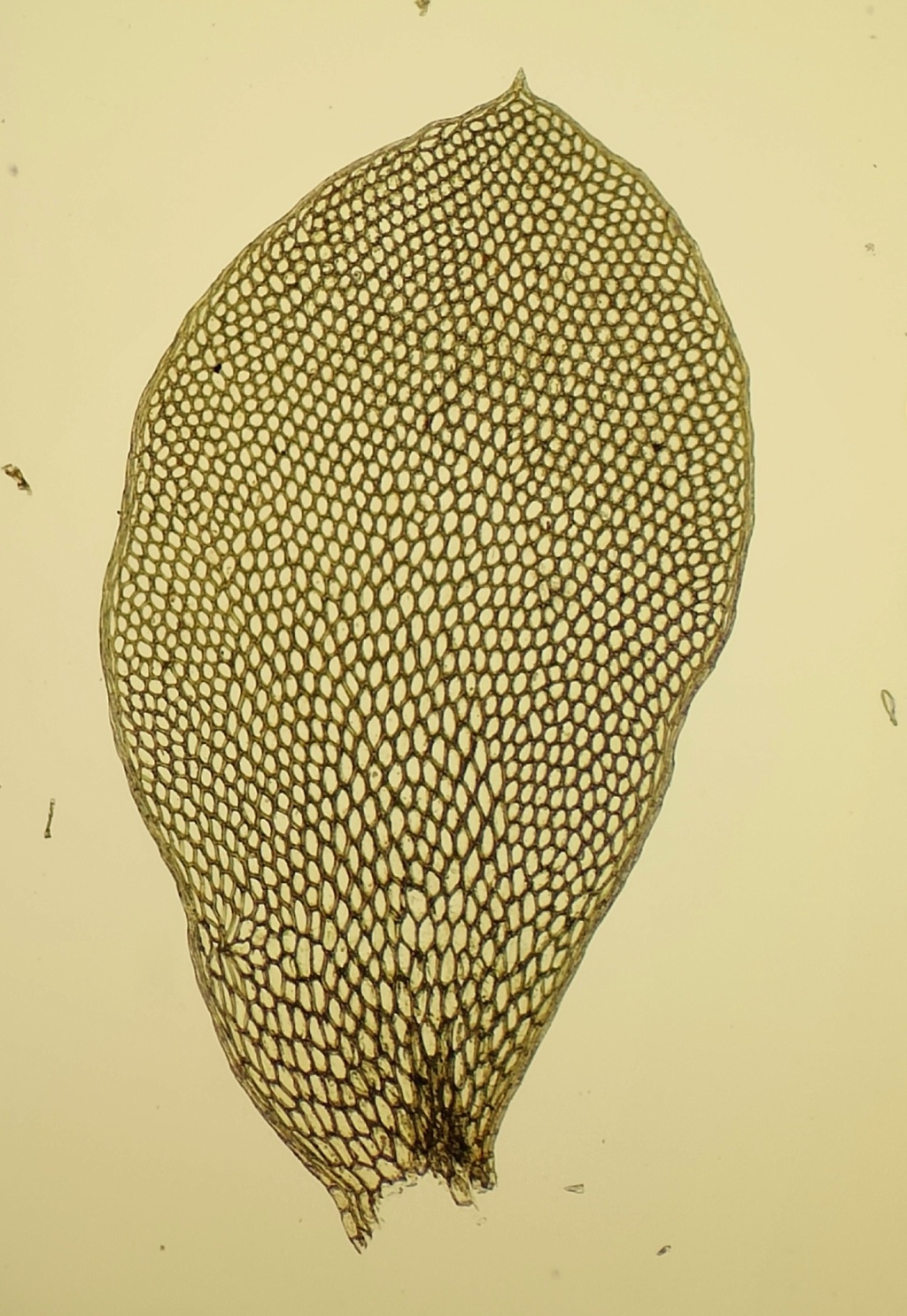Calyptrochaeta brownii
(Dixon) J.K.BartlettAsexual propagules absent. Loose, sometimes open turves on soil, rocks, logs or tree ferns and tree trunks, yellowish green to dark green. Stems 8–30 mm long, simple or branched, red-brown, with scattered red-brown rhizoids and a dense tuft of rhizoids at stem base, central strand absent. Leaves erect when moist, slightly undulate or flexuose when dry, asymmetric, spathulate to obovate, 1.3–3 mm long, 0.8–1.5 mm wide, often smaller in ventral and dorsal ranks, plane; costa very weak or absent; apex rounded or obtuse, apiculate, 30–150 μm long; margins entire or weakly dentate toward apex, plane, with 1–4 rows of more elongate cells forming a weak border throughout; laminal cellsin apical half away from margin ±rounded to oblong-hexagonal, 25–75 μm long, 15–40 μm wide; laminal cells near base away from margin rhomboid-hexagonal, 50–120 μm long, 15–40 μm wide; marginal laminal cells linear, 40–120 μm long, 3–4 μm wide. Setae 2–6 mm long, pale brown, slightly papillose. Capsule ovoid, horizontal or pendulous, straight, 0.6–1.5 mm long. Calyptra smooth, fringed at base. Operculum 0.4–0.6 mm long.
WPro, HSF, HNF, OtR, VAlp. Also QLD, NSW and Tas. New Zealand. Uncommon in wet-sclerophyll forest and cool-temperate rainforest in the Otways, the Yarra Ranges and near Mount Baw Baw.
Calyptrochaeta otwayensis Streimann of the Otways and King Island is included here within C. brownii. Calyptrochaeta otwayensis was distinguished by minor morphological differences such as a slightly longer apiculus and one or two more rows of border cells (Streimann 2000). Minor morphological differences in conjunction with almost identical DNA sequences from chloroplast, mitochondrial and nuclear genomes was used by Ho et al. (2012) as reason to consider them conspecific.
 Spinning
SpinningSynonyms
Ho, B.-C.; Pokorny, L.; Tan, B.C.; Frahm, J.-P.; Shaw, A.J.; Quandt, D. (2012). Molecular evolution and diversification of the moss family Daltoniaceae (Hookeriales, Bryophyta) with emphasis on the unravelling of the phylogeny of Distichophyllum and its allies. Botanical Journal of the Linnean Society 170: 157–175.
Streimann, H. (2000). Taxonomic studies on Australian Hookeriaceae (Musci). 3. The genera Calyptrochaeta, Daltonia, Hookeriopsis and Sauloma. Journal of the Hattori Botanical Laboratory 88: 101–138.


